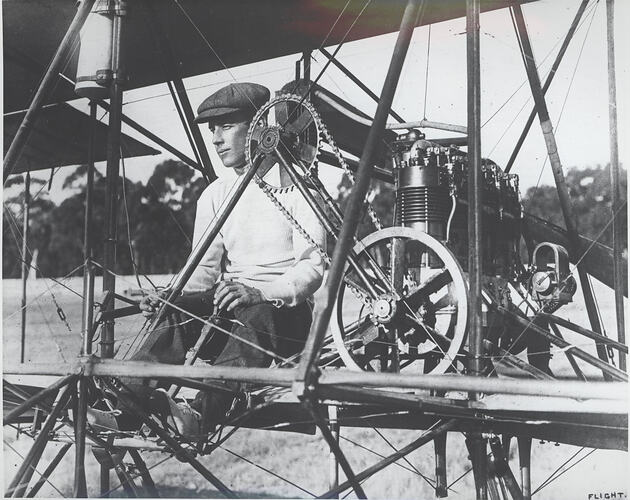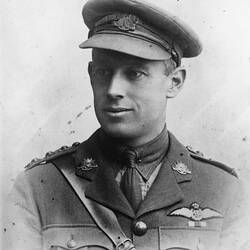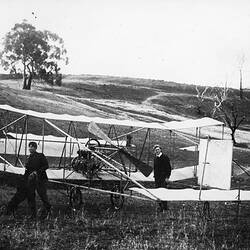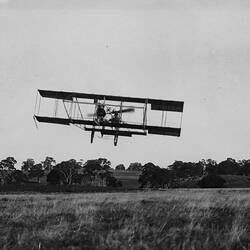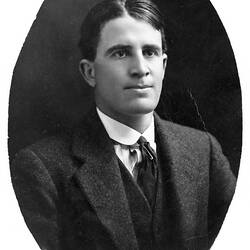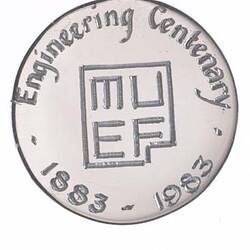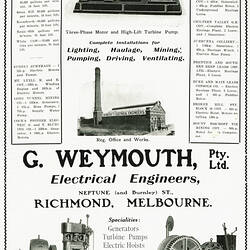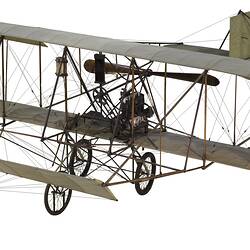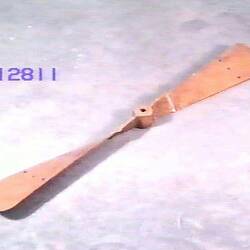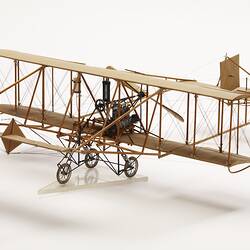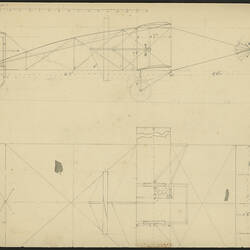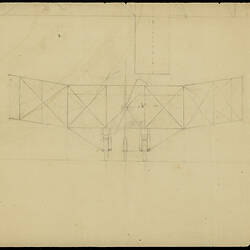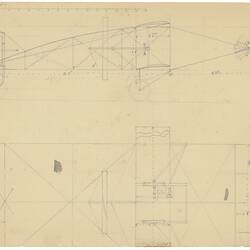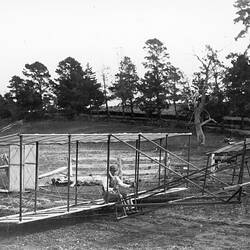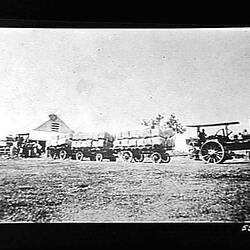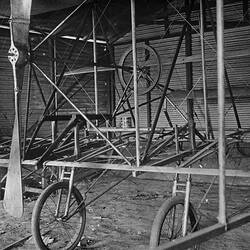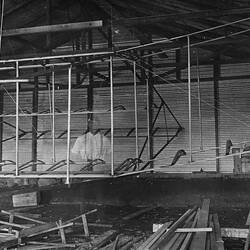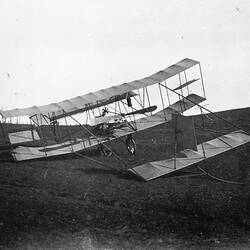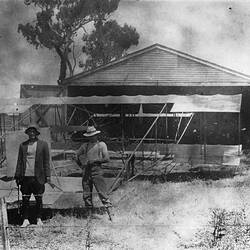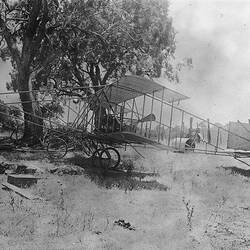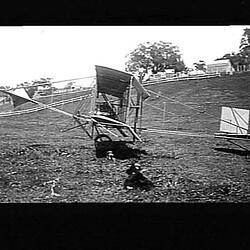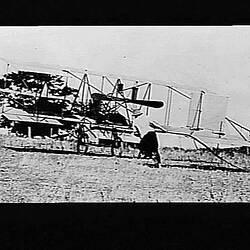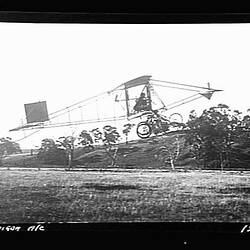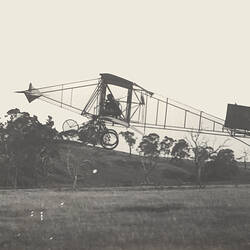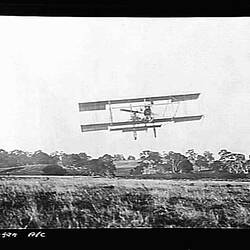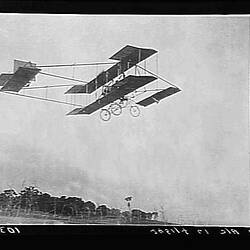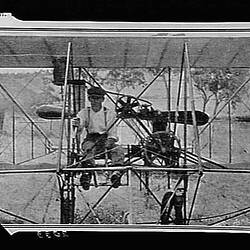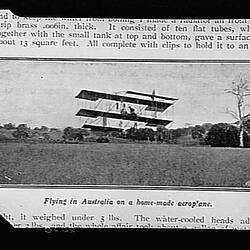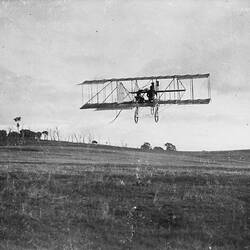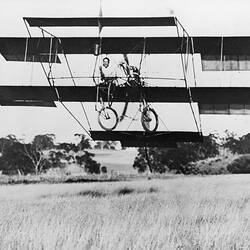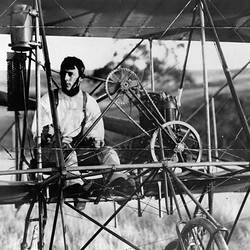John Robertson Duigan was born at Terang in the Western District of Victoria on 31 May 1882. His father, John Charles Duigan was a local bank manager with the Colonial Bank of Australasia and owned a number of grazing properties in Victoria and New South Wales. His mother, Jane Robertson came from an established Western District family. John Robertson was the eldest son of five children which also included three daughters (Alice, Muriel and Edith) and the youngest child, Reginald Charles, born in 1888.
In about 1889 the family moved to Melbourne to live at the seaside suburb of Brighton in an imposing new Italianate mansion on the corner of Moule Avenue and Bay Street. In 1891 as the looming financial crisis put pressure on his father's business interests, they moved to a smaller house in Oak Avenue, Elsternwick. John R. Duigan began attending classes at Brighton Grammar School in 1893. During his time at Brighton Grammar he won the 1898 O'Hara Cup for sports and a physiology prize in 1900. He was also an active member of the school's cadet unit and held the rank of sergeant. After matriculating in May 1901, it was reported that he briefly attended classes at the Working Men's College in Melbourne (now RMIT University), although no record has been found to confirm that he was formally enrolled. Despite qualifying for entry to the University of Melbourne, Duigan decided to travel to Britain to train as an electrical engineer as no suitable courses were available in Melbourne. He departed in October 1901 on the RMS India arriving in London in December 1901.
In early 1902 Duigan began classes at Finsbury Technical College in London. One of his fellow electrical engineering students at Finsbury was Frederick Handley Page, later to become a leading name in British aviation. Duigan completed his certificate in electrical engineering in 1904. While living in Clapham Road, London, he became interested in motorcycling and purchased a machine on which he rode long distance trips to places like Bristol. He completed a course in mechanical engineering and driving at Battersea Polytechnic Institute in 1905, and then worked for the Wakefield & District Light Railway, which operated electric trams near Leeds.
By 1908 Duigan had returned to Melbourne where he worked for a short period with Geo. Weymouth Pty Ltd, one of Australia's leading early manufacturers of electrical equipment. He then joined his brother Reg at 'Spring Plains', a 10,000 acre sheep station owned by their father near Mia Mia in central Victoria. It was here that he received news, via a postcard from a British friend, of Wilbur Wright's extended flights in France in late 1908. Enthused by the practical challenge of achieving powered flight Duigan embarked on a series of practical experiments that would culminate within two years in designing, building and successfully flying the first Australian aircraft. Between July 1910 and May 1911, John Duigan and his brother made some 80 flights in their home-built biplane ranging from short hops of a few metres to three-quarters a of mile (1,200 metres) in duration.
In late 1911, Duigan returned to Britain to obtain an aviator's certificate. He purchased a two-seat biplane 'of the latest type' from A.V. Roe which he fitted with an Alvaston engine. Unfortunately John had bought an untried prototype design which failed to fly at Portholme Meadow with the original engine. Even after fitting a more powerful 8-cylinder 35 horsepower ENV engine and a new propeller carved by Duigan out of Walnut timber, John needed all his engineering and flying experience to coax the aircraft into the air. After almost six months of further tinkering with the biplane at Brooklands, John had accumulated only four hours of flying time, but received his certificate (No. 211) after passing a flying test on 20 April 1912. He sold the aircraft but retained the engine and returned to Australia in late 1912. Along with his brother, John began work at Ivanhoe on another Avro-type biplane of the same basic design using the ENV engine and parts brought back from Britain. By using mountain ash for the frame he managed to considerably reduce the overall weight, but the design still had significant limitations. During its first test flights at Keilor on 17 February 1913, the biplane was caught by a sudden gust of wind while approaching landing and crashed flipping upside down injuring Duigan and severely damaging the plane.
After marrying Kathleen Rebecca Corney at Elsternwick in November 1913, John abandoned his flying pursuits for a time. In partnership with Horace John White, of Elwood, he established the electrical engineering business White & Duigan at 4 Wrights Lane in Melbourne, specialising in the repair of motor car and motorcycle magnetos and the installation of electric lighting sets.
After the First World War broke out Duigan wrote to the Defence Department offering to sell his 1913 biplane for pilot training, but the offer was declined. In March 1916 Duigan joined the Australian Flying Corps (AFC) as a lieutenant, becoming one of the original members of No. 2 Squadron formed at Point Cook. At 33 years of age he was one of the oldest and most experienced pilots in the airforce. After initial training at Point Cook, he sailed for Europe, serving with distinction as a flying instructor in Britain and a reconnaissance pilot on the front line in France and Belgium. In September 1918, he was awarded the Military Cross for 'conspicuous gallantry and devotion to duty' in an incident on 9 May when he successfully made a forced landing after both Duigan and his observer were shot during a vicious attack by four enemy aircraft.
After returning to Melbourne in 1919, Duigan sold his interest in the engineering business. In 1920 he donated his original 1910 biplane to the Industrial & Technological Museum in Melbourne. It was delivered in May 1920 after being moved from Spring Plains where it had remained stored in the shed where it was built since it last flew in 1911. In 1928, Duigan and his wife moved to Yarrawonga on the Murray River and opened a garage business trading as Old Bridge Motors. In late 1940, Duigan suffered a heart attack and sold the business in 1941 to return to Melbourne where he worked for the Aeronautical Inspection Directorate (AID). His health declined in the late 1940s and he was diagnosed with cancer in 1950. He died at his home in Warrandyte Road, Ringwood on 11 June 1951.
References:
Crotty, David, A flying life: John Duigan and the first Australian aeroplane, Museum Victoria, Melbourne, 2010.
Kendall, F.J., 'John Robertsoon Duigan, a pioneer aviator in Australia', The Victorian Historical Magazine, No.45, 1974.
Meggs, K., Australian-Built Aircraft & the Industry, vol.1, book 1, 1884-1939, Four Finger Publishing, Seymour, Victoria, 2009.
Parnell, N. & Bouighton, T., Flypast: A Record of Australian Aviation, Australian Government Publishing Service, Canberra, 1988.
Duigan, John Robertson (1882 - 1951), Australian Dictionary of Biography Online Edition, http://adbonline.anu.edu.au/biogs/A080384b.htm.
John Robertson Duigan & Reginald Charles Duigan, http://www.ctie.monash.edu.au/hargrave/duigan_bio.html.
More Information
-
Keywords
-
Localities
Mia Mia, Victoria, Australia, Epsom, Bendigo, Victoria, Australia
-
Authors
-
Article types
